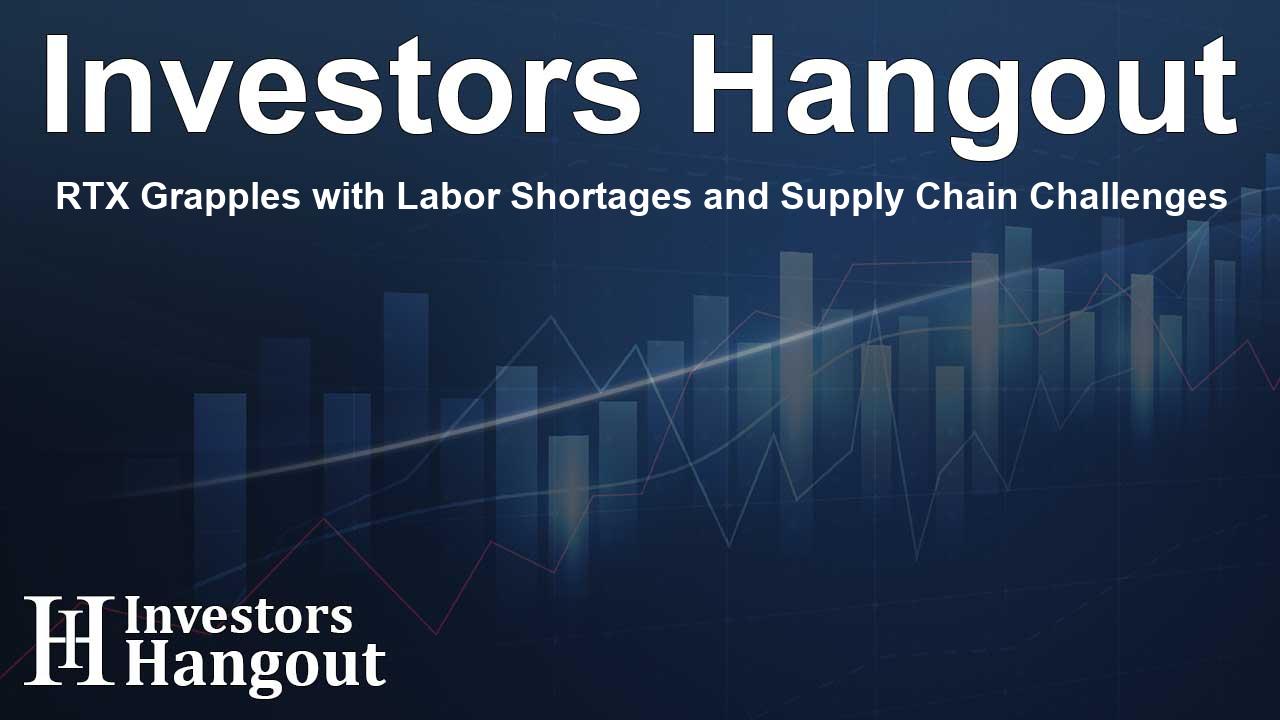RTX Grapples with Labor Shortages and Supply Chain Challenges

RTX’s Post?Pandemic Headwinds, Plainly Put
Aerospace and defense have been on a bumpy descent and climb since COVID-19. RTX, one of the sector’s biggest names, has been frank about where the turbulence is coming from: supply chains still healing and not enough skilled people to do the work. Executive Chairman Greg Hayes says demand for aviation products is strong—surging, in places—but meeting that demand is hard when qualified labor is scarce and critical parts don’t arrive on time.
Aftershocks the Supply Chain Can’t Shake Off
At the recent Global Aerospace Summit, Hayes made it clear that the pandemic’s after-effects aren’t behind the industry yet. Leaders across aerospace echoed the same theme: disruptions continue, mostly because there aren’t enough trained workers and certain parts remain in short supply. The backlog isn’t just a blip. It’s structural, and it’s sticky.
When Demand Heats Up Faster Than Supply
Airlines are rebuilding schedules and flying fuller fleets, so they’re hunting for parts to keep aircraft in service. At the same time, they’re pressing manufacturers for new jets. That two-front push—maintain what’s flying and build what’s next—has stretched the system. As one CEO, Olivier Andries, put it, the industry is wrestling with the clash between demand that snapped back and a supply chain jolted by repeated shocks. The result is tension that shows up in longer lead times, tougher prioritization calls, and constant tradeoffs.
Geopolitics Forcing a Harder Look at Sourcing
Layered on top of operational strain is geopolitical risk. Hayes said RTX is reassessing how much it relies on suppliers in China. The aim isn’t to pull the plug overnight, but to be ready if the world turns suddenly. RTX currently works with roughly 2,000 suppliers in China, a deep network that helps on cost and capacity—yet it’s also a point of vulnerability in a volatile moment.
Plan B Without Burning Bridges
RTX isn’t trying to cut off Chinese partners. Instead, Hayes stressed the need for backup plans: dual sources, alternate manufacturing paths, and components that can be qualified in more than one place. That kind of redundancy becomes critical if tensions escalate—for example, if a conflict around Taiwan were to emerge. A development like that could trigger U.S. sanctions on China, with direct consequences for American companies, RTX included. Planning now is cheaper than scrambling later.
Keeping Score on Supplier Health—and People
RTX’s reach is broad: about 14,000 suppliers worldwide. That scale helps spread risk, but it only works if the company can see problems early. Hayes said RTX tracks more than on-time delivery and quality metrics. They keep a close eye on financial footing and staffing levels at key suppliers, too. Those signals often show strain before a missed shipment does. The goal is simple: spot cracks before they become breaks.
The Pinch Point: Skilled Labor
Even with better visibility, there’s no quick fix for the labor gap. Hayes has raised the same concern repeatedly—finding qualified workers in crucial production roles is hard, and training takes time. Demand has rebounded faster than the talent pipeline. That mismatch slows schedules, complicates factory planning, and makes every delay upstream feel bigger downstream. You can buy a tool tomorrow; you can’t build experience that fast.
Where This Leaves RTX
RTX’s blunt assessment mirrors what much of aerospace is living through as it emerges from the pandemic’s shadow. Intense demand meets constrained supply, and geopolitics adds risk on top. The companies that manage through it won’t wait for conditions to normalize. They’ll diversify sources, qualify alternatives, and invest in people, even when it’s inconvenient. There’s no tidy finish line here—just steady work, smarter buffers, and a focus on reliability. Quiet progress, not quick fixes.
Frequently Asked Questions
What are the main challenges RTX is dealing with right now?
RTX faces two persistent hurdles: ongoing supply chain disruptions and a shortage of skilled labor. Together, they limit how quickly the company can build and deliver in a market where demand has snapped back.
How is RTX addressing geopolitical risk tied to China?
RTX is reevaluating its reliance on Chinese suppliers and building alternatives so critical parts can be sourced from more than one place. The intent is resilience, not abrupt disconnection, should tensions rise.
What does the labor shortage mean for RTX’s production schedules?
Fewer qualified workers in key roles lead to slower throughput, tighter capacity, and longer timelines. Training helps, but experience takes time, so the labor gap directly affects delivery speed.
How large is RTX’s supplier base, and why does that matter?
RTX works with about 14,000 suppliers around the world, including roughly 2,000 in China. That scale spreads risk, and RTX monitors delivery, quality, finances, and staffing to catch issues early.
Is the aerospace outlook improving or still uncertain?
Demand is improving, but uncertainty remains. Parts and labor constraints persist, and geopolitical tensions add risk. Progress looks gradual—more about building resilience than expecting a quick rebound.
About The Author
Contact Dominic Sanders privately here. Or send an email with ATTN: Dominic Sanders as the subject to contact@investorshangout.com.
About Investors Hangout
Investors Hangout is a leading online stock forum for financial discussion and learning, offering a wide range of free tools and resources. It draws in traders of all levels, who exchange market knowledge, investigate trading tactics, and keep an eye on industry developments in real time. Featuring financial articles, stock message boards, quotes, charts, company profiles, and live news updates. Through cooperative learning and a wealth of informational resources, it helps users from novices creating their first portfolios to experts honing their techniques. Join Investors Hangout today: https://investorshangout.com/
The content of this article is based on factual, publicly available information and does not represent legal, financial, or investment advice. Investors Hangout does not offer financial advice, and the author is not a licensed financial advisor. Consult a qualified advisor before making any financial or investment decisions based on this article. This article should not be considered advice to purchase, sell, or hold any securities or other investments. If any of the material provided here is inaccurate, please contact us for corrections.
